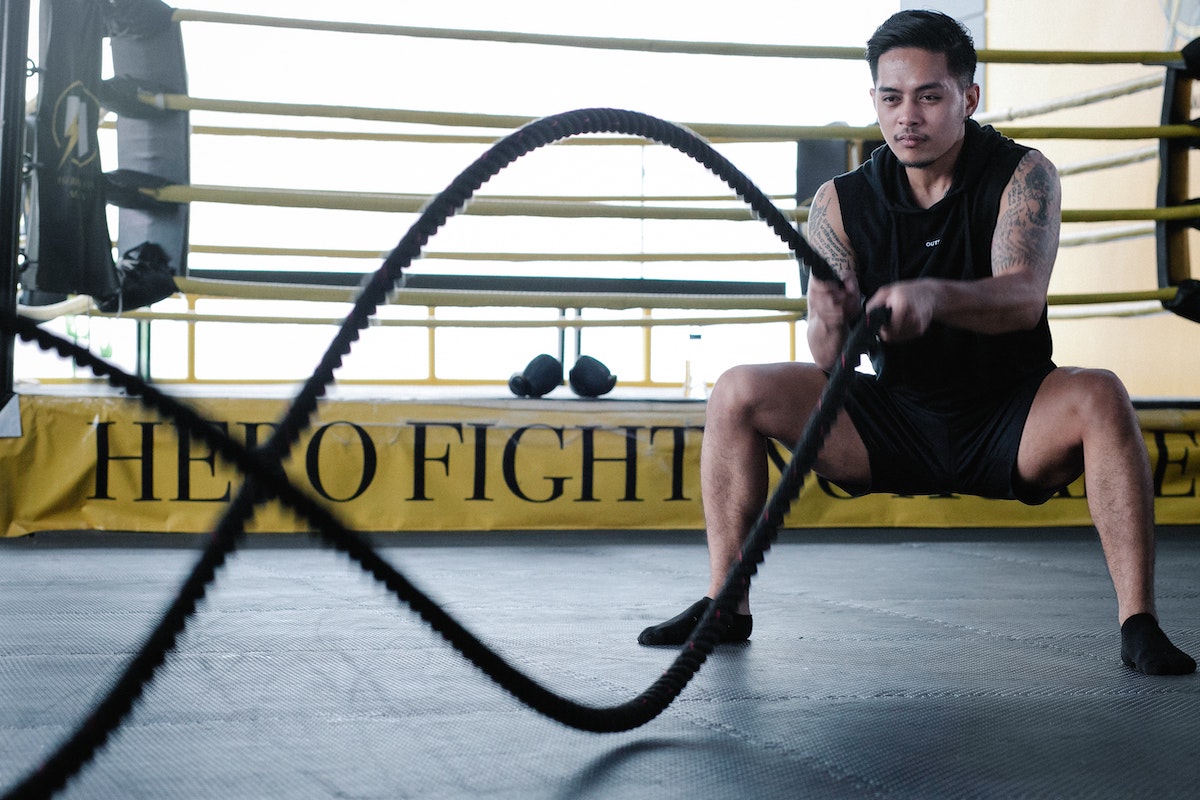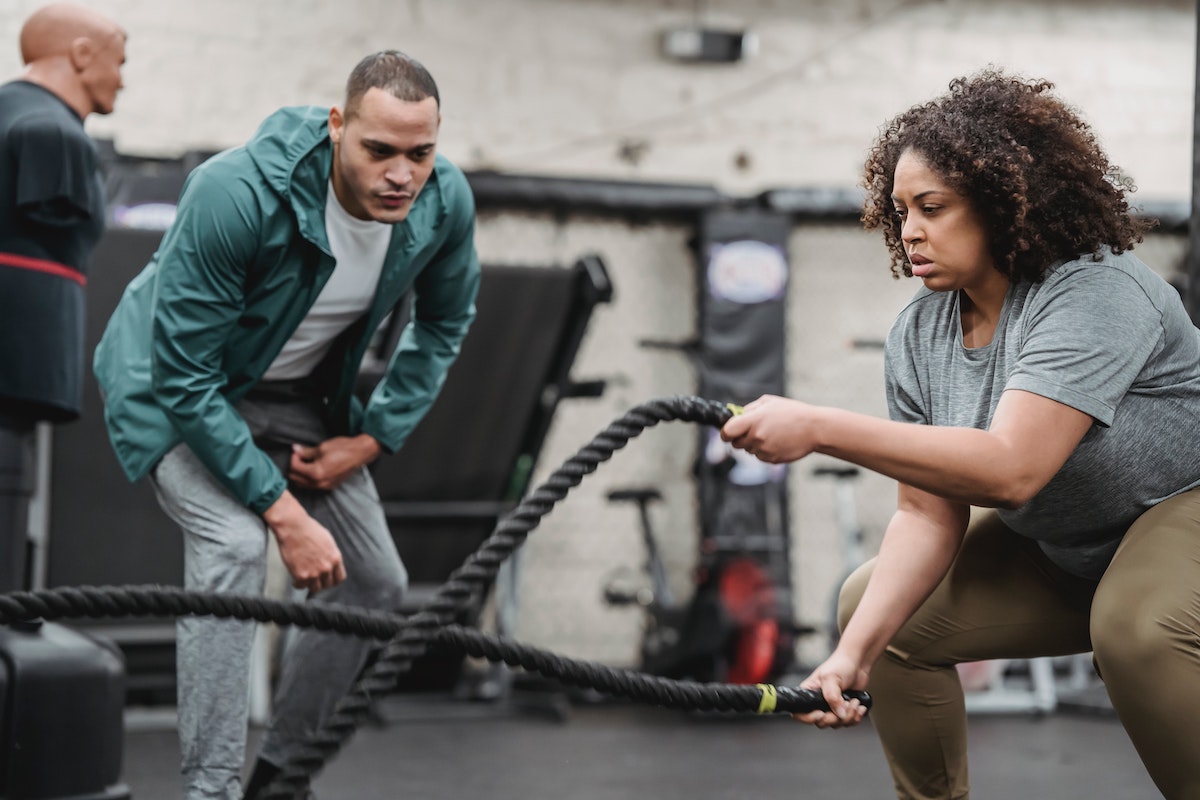Many Americans want to get in shape and become physically fitter but they’re not very active at all. In 2017 survey, over 75 percent of adult respondents in the United States said that staying in shape and being physically attractive were very important for them. This enthusiasm to be physically active and for weight loss carried over during the worse of the pandemic in 2020.
Plenty of people began working out at home, with many consulting with exercise coaches online. According to another survey, 90 percent of respondents say they will continue working out at home even when gyms are already opening.
If you want to continue your weight loss workouts but want something different, rope exercises may provide the variety you’re looking for.
Learn about exercise ropes, what sort of equipment you’ll need and how you can use these hand exercise tools effectively.
What are Rope Exercises?
Rope exercises involve the use of exercise ropes also known as battling ropes. This type of fitness equipment is not related to jump ropes, which are used for another type of cardio exercise.
Unlike jump ropes, exercise ropes work on strength, endurance as well as your cardiovascular system. Jump ropes focus on your legs and overall body work, with your arms pumping up and down in time with your lower body. When you use rope exercises, the focus is main on your arms and upper body. Your legs and lower body provide stability rather than be involved in the overall process.
If you ask an exercise coach the benefits of using these equipment over other types of exercises, you’ll be surprised to learn that its not really that different.
Just like other forms of cardio exercise, using exercise ropes burns calories, can improve your mental health and increase your endurance. However, rope exercises require a lot more equipment than most cardio routines.
What Equipment Do You Need for Rope Exercise?

Most cardio routines don’t involve a lot of equipment. For example, if you want to jog, you only really need a good pair of shoes and maybe a water bottle. Anything else is optional. But with rope exercises, you actually do need to invest in some things.
Below is a list of required equipment if you want to use exercise ropes effectively.
-
Battle Ropes
Don’t worry, battling or battle ropes is just another term for exercise ropes. Just like most hand exercise tools, there are many different types of battle ropes. These types mainly vary by length and weight. The longer the battle rope, the harder it would be to use it. The same applies to the weight of the ropes. Choose exercise ropes that are suitable to your level of experience.
-
Gloves
Rope exercises can be repetitive and intense, which means your hands will experience a lot of wear. Without proper protection, you may develop blisters or even wounds from prolonged exercising. You will need to wear gloves to prevent chaffing and similar injuries to your hands. Fingerless exercise gloves will come in handy to maintain your grip on the exercise ropes.
-
Exercise Mats
Unless you prefer to go to the gym, you will have to use your battling ropes at home. And unless you have a large garage or a yard where you can use them outdoors, you must find a room to do the slams, waves and crossovers. If you do these exercises indoors, the ropes will inevitably damage your floor. Exercise ropes are heavy and textured. Repeated use will scuff wood flooring or even threaten to crack tiles. Lay down exercise mats under the ropes to prevent such structural damage.
-
Timers
As with most cardio routines, rope exercises rely on monitoring how long you are doing them to prevent injury or pain. Since using battling ropes involves both of your hands, you will need to set a timer when you start. Luckily for you, there are built-in timer applications in almost all smartphones that can allow you to keep track of your session’s length.
-
An Anchor
Battling ropes require a sturdy point where you can tie them, which is often called the anchor. This cannot be a moveable object like a bookcase or an appliance since the repeated motions of the routine will undoubtedly begin to move it. You need to find a solid support post or a thick enough tree if you are outside. A metal window support frame may suffice, provided it is securely attached. This will prevent any accident that could happen if the ropes were to fly off or become unsecured.
-
A Large Space
Rope exercises require a lot of space since some of these ropes can reach over 20 feet in length. This means you may have to do them in the garage, if its large enough, or out on your lawn if your house doesn’t have a room big enough to accommodate them. If you don’t have any space on your property, see if there’s room at a local park or basketball court for you to do so.
How Can You Effectively Use Rope Exercises?

Rope exercises are some of the most effective cardio routines, letting you lose weight without using dangerous crash diets like the snake diet.
If you want to your exercise ropes and you can’t consult with an exercise coach, here are a few pointers on how you can ensure your battling rope sessions are tough but effective.
-
Watch Your Feet
Battling ropes are heavy and they can easily knock you out of balance if your feet aren’t placed properly. Assume a proper stance and make sure your feet are pressed flat on the ground. Space them evenly, making sure they are shoulder width apart. This will give you optimal balance and prevent you from falling over from the weight and movement of the exercise ropes.
-
Correct Posture
Like all exercises, proper posture is important if you want to reap positive results. When using battling ropes, the ideal pose is to place your feet shoulder width apart. You should then bend your knees slightly, resting the weight on them and your heels. Your back should be leaning slightly forward, preventing the load of the ropes from going to your lower spine.
-
Vary Exercises
Any exercise coach will tell you there are lots of reasons to mix up your workouts. There are three different types of rope exercises and each one focuses on a separate aspect of your body. You should engage in other forms of exercises to prevent muscle damage and explore the full range of your body.
What are the Different Types of Rope Exercises?
Exercise ropes are surprisingly versatile hand exercise tools. You can use them for a variety of workout routines. They are great for high-intensity interval training regimens.
The most common types of exercises with battling ropes are waves, crossovers and slams.
-
Waves
Waves are basically self explanatory. You hold one exercise rope in either hand. You then raise and drop your arms repeatedly to snap the ropes into a wave. The effect is sort of like using dumbbells to lift your forearms. The goal of waves is to test your endurance and improve it.
-
Crossovers
Crossover exercises when using ropes involves lifting the ropes over one shoulder and then dropping them down next to the knee opposite the shoulder you lifted it over. This activates the muscles in your arms, legs and even your core.
-
Slams
Finally, slams are all about improving your strength. They’re simple: all you have to do is pick up a rope in each hand and bring them down unto the ground. Aside from being a hardcore cardiovascular workout, slams are also great for toning and growing the muscles in your arms.
Rope exercises can be difficult, but they are great for weight loss and keeping trim. These basic tips can help you utilize these exercise tools to the best of your ability.




